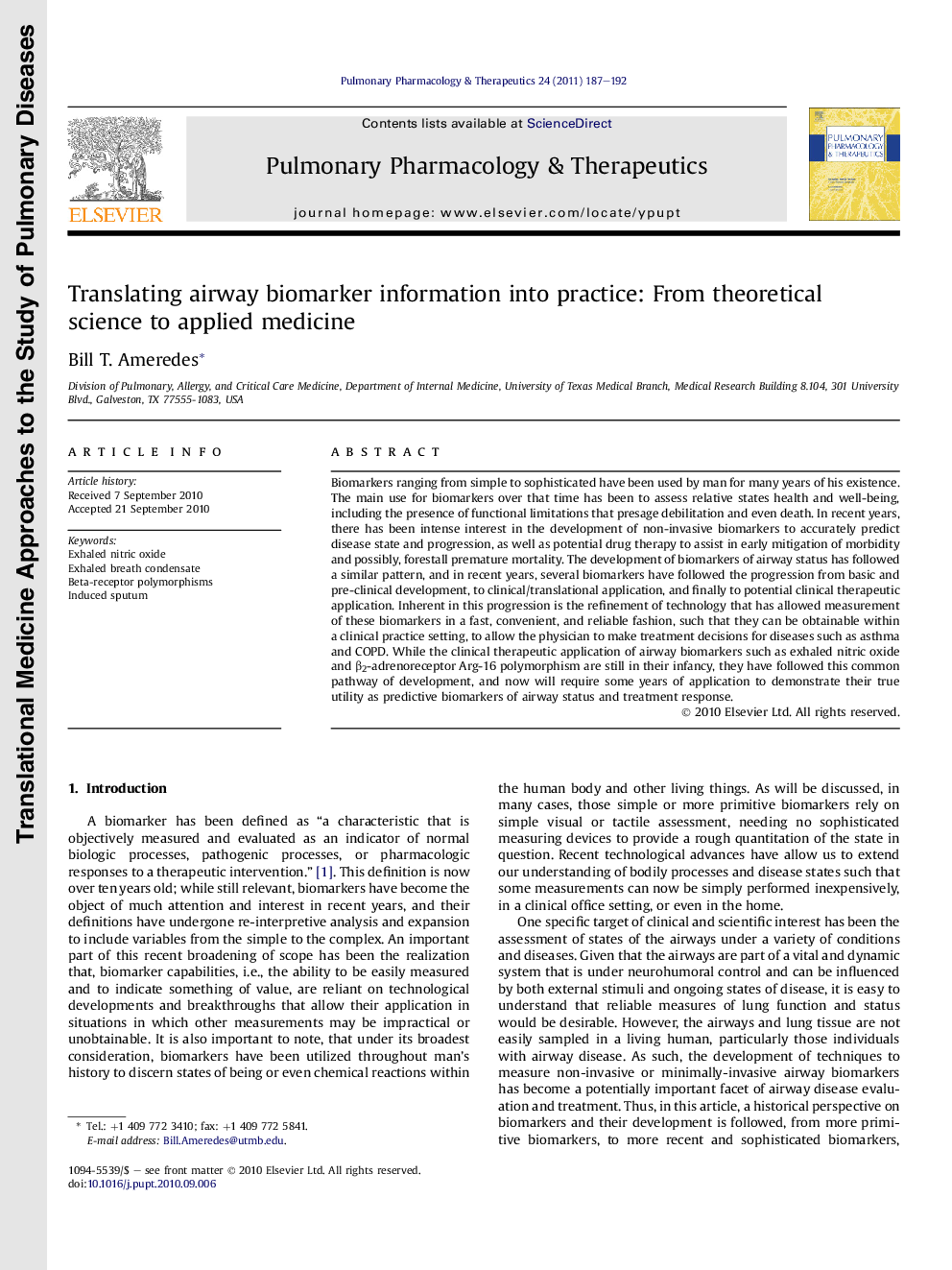| Article ID | Journal | Published Year | Pages | File Type |
|---|---|---|---|---|
| 2567080 | Pulmonary Pharmacology & Therapeutics | 2011 | 6 Pages |
Abstract
Biomarkers ranging from simple to sophisticated have been used by man for many years of his existence. The main use for biomarkers over that time has been to assess relative states health and well-being, including the presence of functional limitations that presage debilitation and even death. In recent years, there has been intense interest in the development of non-invasive biomarkers to accurately predict disease state and progression, as well as potential drug therapy to assist in early mitigation of morbidity and possibly, forestall premature mortality. The development of biomarkers of airway status has followed a similar pattern, and in recent years, several biomarkers have followed the progression from basic and pre-clinical development, to clinical/translational application, and finally to potential clinical therapeutic application. Inherent in this progression is the refinement of technology that has allowed measurement of these biomarkers in a fast, convenient, and reliable fashion, such that they can be obtainable within a clinical practice setting, to allow the physician to make treatment decisions for diseases such as asthma and COPD. While the clinical therapeutic application of airway biomarkers such as exhaled nitric oxide and β2-adrenoreceptor Arg-16 polymorphism are still in their infancy, they have followed this common pathway of development, and now will require some years of application to demonstrate their true utility as predictive biomarkers of airway status and treatment response.
Related Topics
Health Sciences
Medicine and Dentistry
Pulmonary and Respiratory Medicine
Authors
Bill T. Ameredes,
